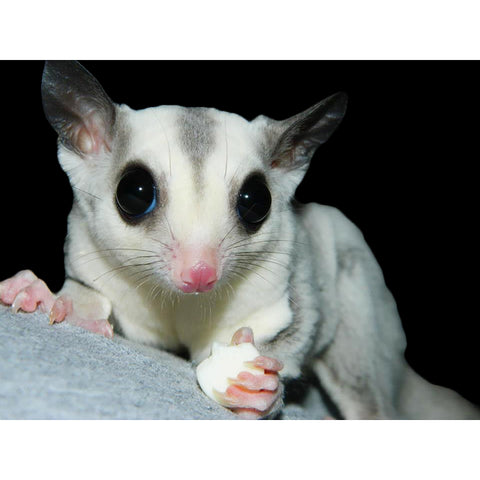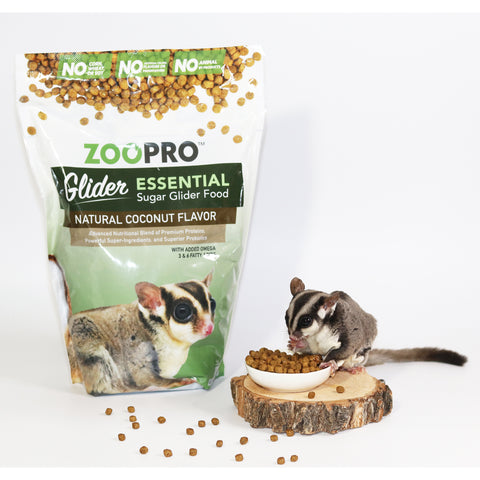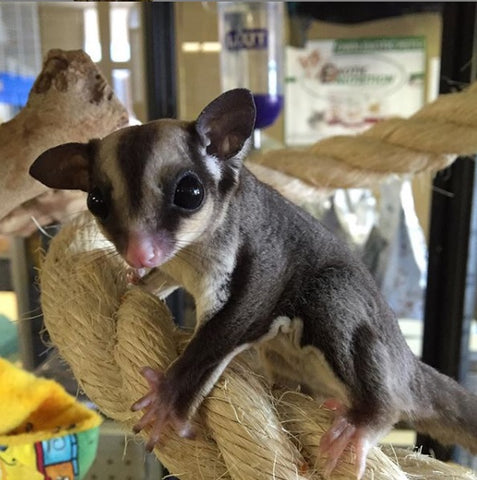
Sugar Gliders: Fascinating Tree-Dwelling Marsupials
Sugar gliders, scientifically known as Petauridae Breviceps, are tree dwelling marsupials that belong to the order of animals that carry their babies in pouches. They are found in the wild in Indonesia, Papua New Guinea, and Australia. These nocturnal creatures are awake throughout the night and sleep during the day, with their most active hours being at dusk and dawn. In the wild, sugar gliders are omnivores and have a varied diet that includes insects, invertebrates, tree gums, nectars, and saps. Their name "gliders" comes from the skin membrane under their arms that allows them to glide through the air, while their name "sugar" is derived from the sweet foods they consume in the wild, such as fruit, nectar, and sap.
Popularity of Sugar Gliders as Pets
Sugar gliders began gaining popularity as pets in the United States in the mid-1990s when they were imported from Indonesia. The original animals offered for sale were wild-caught, standard grey in color, and far from being tame. However, the sugar gliders available for sale today are mostly domestically raised, come in a variety of colors, and are much tamer than their wild-caught counterparts. These animals reproduce at around 8-12 months of age, with mothers typically having one to two babies (joeys) at a time, twice per year. Sugar gliders are easily bred in captivity, with a gestation period of 16 days. The joeys crawl to the mother's pouch and attach themselves to a nipple, where they stay for the next 8 weeks until they are ready to be weaned onto a solid diet at around 4 months of age.

Recommended Diet for Sugar Gliders
There are various opinions on the best diet for sugar gliders. However, it is generally recommended to provide a well-rounded, varied diet that mimics their natural diet in the wild. The recommended protein content in a glider's diet should be around 30%-45%, especially for young or breeding gliders. Many commercially available sugar glider diets have a protein content of only 25%. If you choose to feed a diet other than a nutritionally complete pellet diet, it is important to supplement with a multivitamin and calcium supplement. However, if you feed one of the Exotic Nutrition sugar glider diets, such as Glider Essential or Glider Complete, supplements are not necessary as the pellets already contain the necessary vitamins and nutrients. Feeding an incomplete diet without supplements can lead to nutritional problems.
Social Nature and Housing of Sugar Gliders
Sugar gliders are colony animals that live in large groups in the wild. They are highly interactive and do best when living in groups of at least two or three. While interacting with humans can provide some companionship, it is not comparable to the companionship of another glider. Since gliders are nocturnal, most people can only spend time with them in the mornings and evenings when both parties are awake. Therefore, it is strongly recommended to adopt gliders in pairs or groups to keep them socialized. Multiple female gliders or multiple male gliders can be kept together in the same cage, but it is not suggested to keep multiple males with only one female, as this can lead to fighting during the breeding season. The ratio of females should always be equal to or higher than the ratio of males in the cage. It is also important to allow gliders to adjust before living together if they did not come from the same colony. A 30-day quarantine period in separate cages is recommended, allowing them to get used to each other's smells and behaviors before interacting face-to-face. You can use a travel cage for this quarantine period. Once they are accustomed to each other, supervised introductions in a neutral space can be made. Most gliders will adapt peacefully to the addition of another or multiple new gliders.

Cage Requirements and Enrichment for Sugar Gliders
Sugar gliders are active creatures and require plenty of room in their cage. As tree-dwelling animals, they are well adapted to jumping, climbing, and vertical movement. The amount of vertical space is more important than the width or square footage of the cage. A good cage size for a pair of sugar gliders should be at least 35 inches tall and have about 12 square feet of interior space (24” x 24” x 35”). It is recommended to provide a cage with wire spacing no more than 1/2 inch wide, to prevent escape. Gliders have opposable thumbs and can climb easily on both horizontal and vertical bars. Claims that cages must have horizontal bars or a specific cage finish are not true, as sugar gliders have no problem climbing on vertical wires and Exotic Nutrition cages have been used successfully for many years. Our most popular cages are the Brisbane Cage and the Borneo Cage (Version II).
To enrich the lives of sugar gliders, it is important to provide nest pouches, toys, and other accessories in their cage. Nest pouches are cloth sacks that can be hung from the sides or roof of the cage to provide a safe and private space for gliders to sleep or retreat to. It is recommended to hang multiple pouches in the cage to provide different sleeping areas. Toys should be provided to promote interest, curiosity, and movement. These can include toys that encourage foraging, branches, ropes, cage plants, shelves, platforms, and ladders. Toys are essential for mental and physical health, as they provide entertainment and stimulate natural foraging instincts. Sugar gliders also enjoy climbing and jumping, so providing branches, ropes, and platforms for exercise is important. An exercise wheel, such as the Silent Runner, can also be a great addition to the cage, providing ample opportunity for exercise. Food and water dishes should be provided, with options such as stainless steel cups or hanging water bottles. It is best to keep dishes near the top of the cage to avoid contamination from falling feces or urine.
Bonding with Sugar Gliders
Bonding with sugar gliders is an important part of establishing a relationship with them. It is easier to bond when gliders are young, but it is still possible to bond with adult gliders as well. Handling joeys or young gliders with a Calming Glove three to four times per day for at least 30 minutes is recommended. Adult gliders may be slow to warm up, but with time and patience, they can become assimilated to a new family. Bonding pouches are useful tools in the bonding process, providing a warm and comfortable place for gliders to relax while being carried around. Treats can also be used to coax gliders out of their pouches and make contact with humans. Our most popular treats are Nectar Pods and Fish Sticks. It is important to be gentle, consistent, patient, and loving in the bonding process.
In conclusion, sugar gliders are fascinating tree-dwelling marsupials that make interesting and interactive pets. Providing a well-rounded, varied diet, suitable housing, enrichment, and bonding opportunities are essential for their well-being. By understanding their natural behaviors and needs, you can create a fulfilling and enriching environment for your sugar gliders.
Ready to Shop? Shop By Pet or Shop By Category
Got Questions? Browse more free Blogs or Contact Us with any inquiries regarding our products.
Notice: Exotic Nutrition cannot provide specific care guidelines on an individual basis. Please consult a veterinarian or experienced breeder.
Exotic Nutrition is proud to serve hundreds of universities, zoological parks, veterinarians, research centers and other institutions seeking to advance the health and well-being of exotics worldwide. See a full list of institutions using our products here.
Exotic Nutrition has a heart for animals in need. Through regular donations to rescues, rehabilitators, and special fundraiser events, Exotic Nutrition is making a significant impact in the lives of animals. See a full list of our charitable donations here.

Leave a Comment